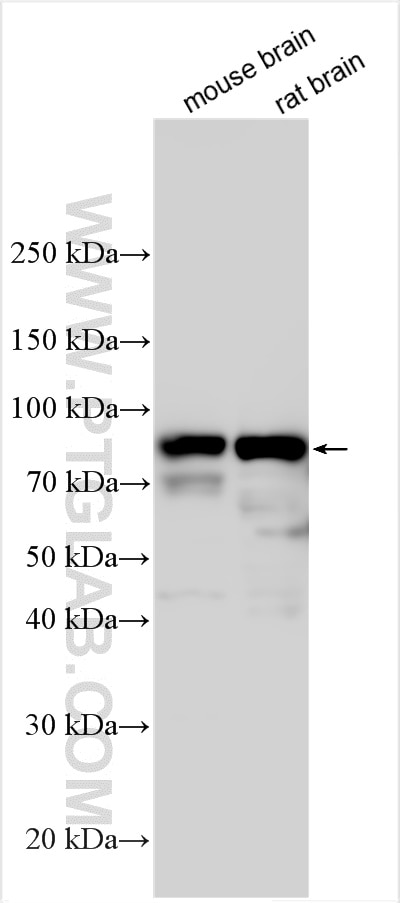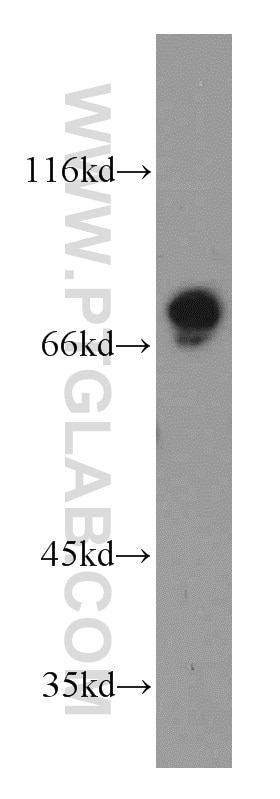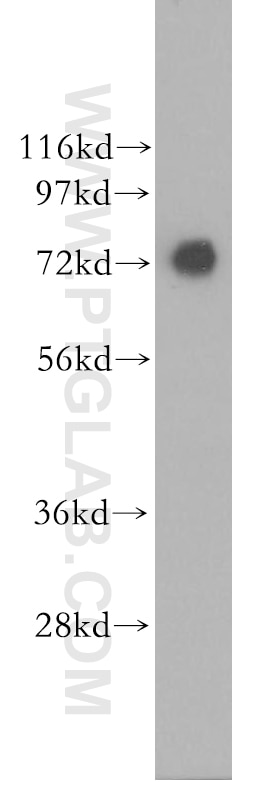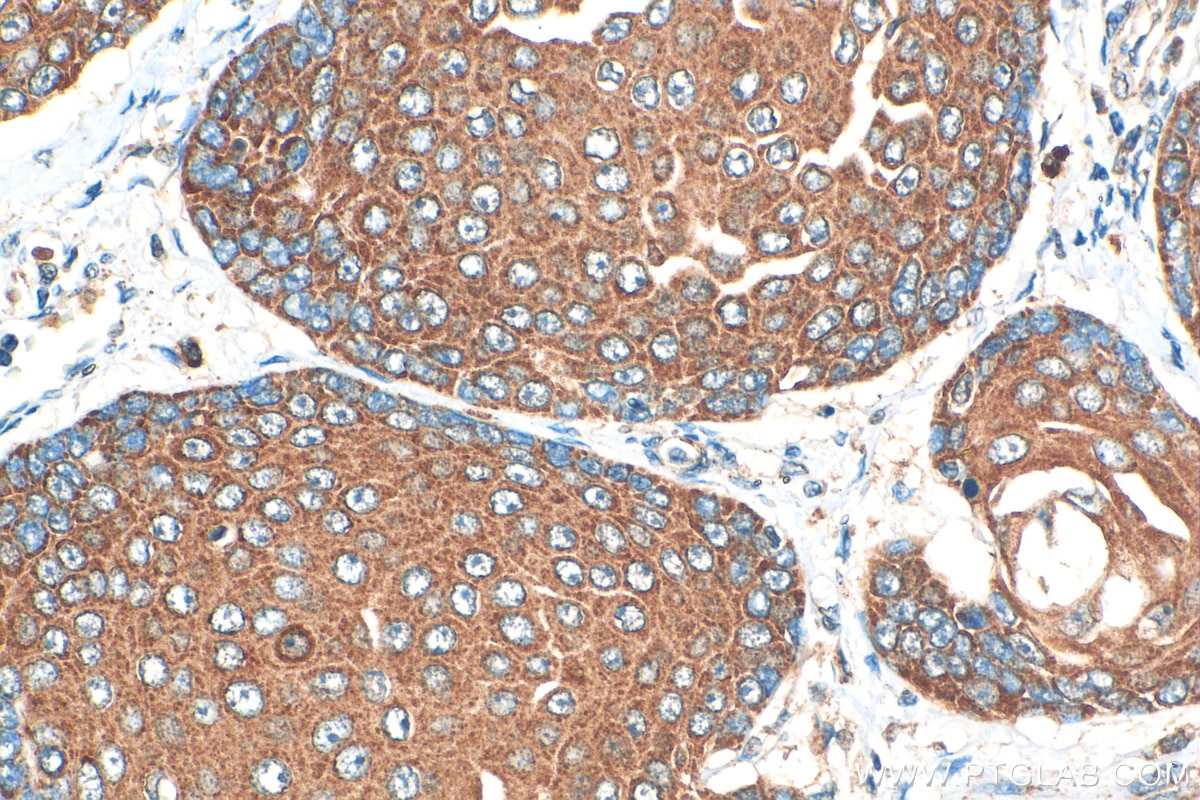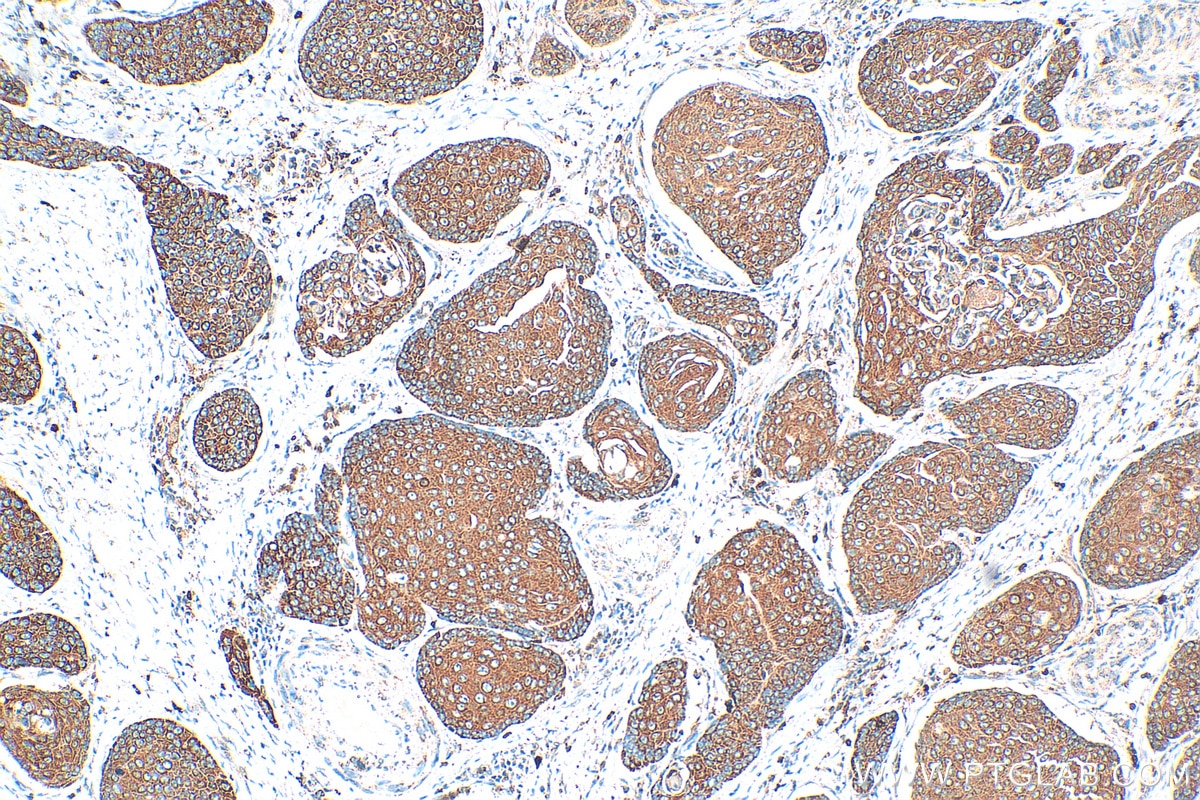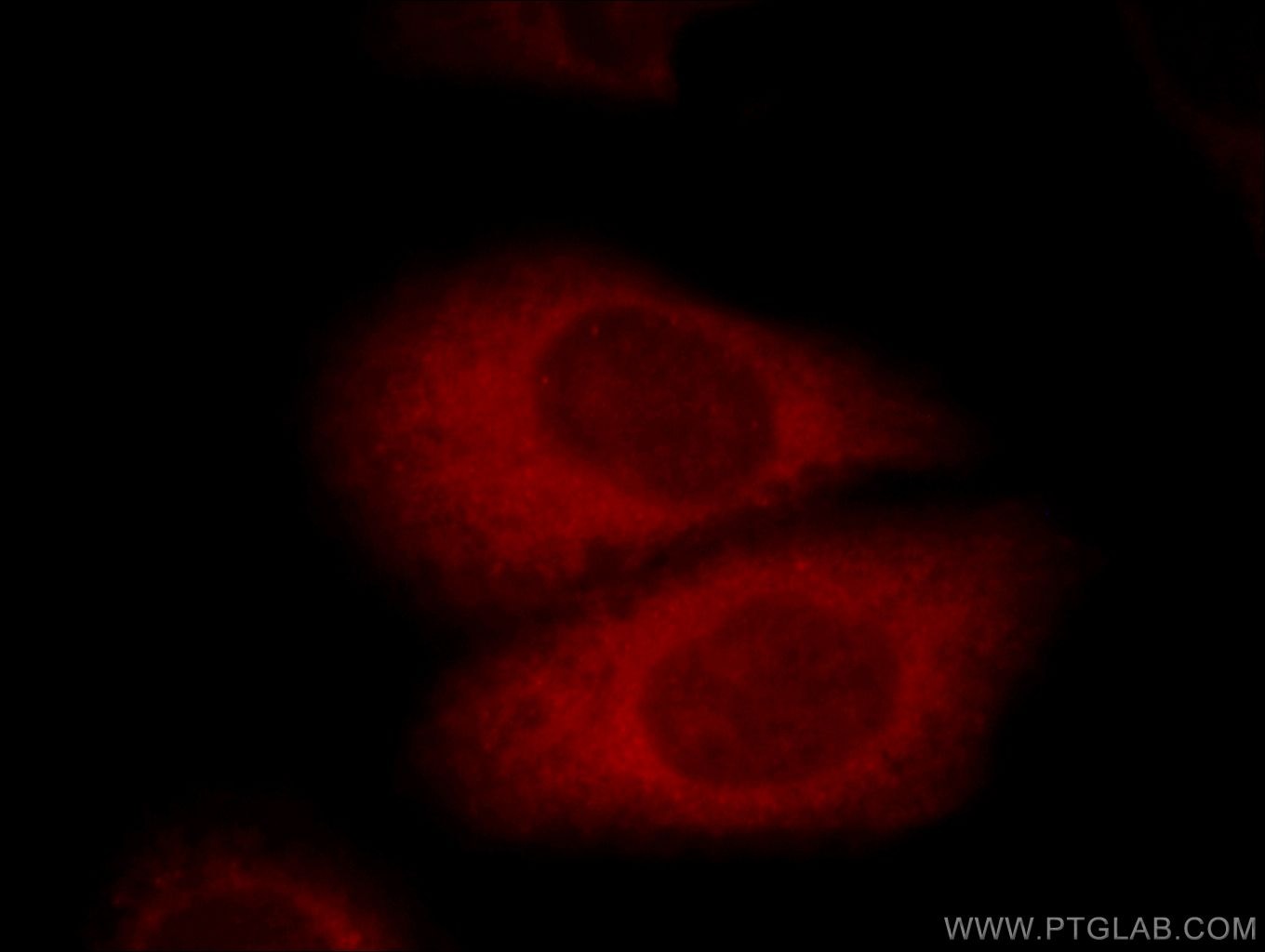Tested Applications
| Positive WB detected in | mouse brain tissue, HeLa cells, human brain tissue, rat brain tissue |
| Positive IHC detected in | human oesophagus cancer tissue Note: suggested antigen retrieval with TE buffer pH 9.0; (*) Alternatively, antigen retrieval may be performed with citrate buffer pH 6.0 |
| Positive IF/ICC detected in | HepG2 cells |
Recommended dilution
| Application | Dilution |
|---|---|
| Western Blot (WB) | WB : 1:500-1:3000 |
| Immunohistochemistry (IHC) | IHC : 1:50-1:500 |
| Immunofluorescence (IF)/ICC | IF/ICC : 1:10-1:100 |
| It is recommended that this reagent should be titrated in each testing system to obtain optimal results. | |
| Sample-dependent, Check data in validation data gallery. | |
Published Applications
| KD/KO | See 1 publications below |
| WB | See 3 publications below |
| IHC | See 2 publications below |
| IF | See 2 publications below |
Product Information
11483-1-AP targets GPSM1 in WB, IHC, IF/ICC, ELISA applications and shows reactivity with human, mouse, rat samples.
| Tested Reactivity | human, mouse, rat |
| Cited Reactivity | mouse, rat |
| Host / Isotype | Rabbit / IgG |
| Class | Polyclonal |
| Type | Antibody |
| Immunogen | GPSM1 fusion protein Ag2018 Predict reactive species |
| Full Name | G-protein signaling modulator 1 (AGS3-like, C. elegans) |
| Calculated Molecular Weight | 652 aa, 72 kDa |
| Observed Molecular Weight | 70-80 kDa |
| GenBank Accession Number | BC017353 |
| Gene Symbol | GPSM1 |
| Gene ID (NCBI) | 26086 |
| RRID | AB_2279358 |
| Conjugate | Unconjugated |
| Form | Liquid |
| Purification Method | Antigen affinity purification |
| UNIPROT ID | Q86YR5 |
| Storage Buffer | PBS with 0.02% sodium azide and 50% glycerol , pH 7.3 |
| Storage Conditions | Store at -20°C. Stable for one year after shipment. Aliquoting is unnecessary for -20oC storage. 20ul sizes contain 0.1% BSA. |
Background Information
GPSM1, also named as AGS3, is a receptor-independent G protein activator that has been implicated in multiple biological events such as brain development, neuroplasticity and addiction, cardiac function, Golgi structure/function, macroautophagy and metabolism. It contains seven tetratricopeptide repeats in its N-terminal half and four G-protein regulatory (GPR) motifs in its C-terminal half. It has been shown that AGS3 could regulate the orientation of the mitotic spindle, cAMP production, membrane protein transport, and asymmetric cell division by binding preferentially to inactive Gai/o subunits complexed with guanine dinucleotide phosphate (GDP) at multiple G-protein regulatory or GoLoco motif repeats. It also plays an important anti-apoptotic role through enhancing the phosphorylation of cyclic AMP response element-binding protein (p-CREB).
Protocols
| Product Specific Protocols | |
|---|---|
| WB protocol for GPSM1 antibody 11483-1-AP | Download protocol |
| IHC protocol for GPSM1 antibody 11483-1-AP | Download protocol |
| IF protocol for GPSM1 antibody 11483-1-AP | Download protocol |
| Standard Protocols | |
|---|---|
| Click here to view our Standard Protocols |
Publications
| Species | Application | Title |
|---|---|---|
Nat Commun GPSM1 impairs metabolic homeostasis by controlling a pro-inflammatory pathway in macrophages | ||
J Ovarian Res Depletion of GPSM1 enhances ovarian granulosa cell apoptosis via cAMP-PKA-CREB pathway in vitro.
| ||
Mol Metab GPSM1 in POMC neurons impairs brown adipose tissue thermogenesis and provokes diet-induced obesity |
